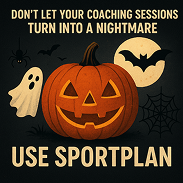TRANSFORM YOUR TEAM'S SEASON WITH PROFESSIONALLY PLANNED SESSIONS
Use our expert plans or build your own using our library of over 700+ drills, and easy-to-use tools.
JOIN NOWWhen is a ball - a No Ball?





A ball is considered to be a no-ball, if it bounces on the ground whilst en route to the batter.
A ball is also considered a no-ball if there isn't a smooth underarm action, the ball is above the head or below the knee of the batter, (standing Height) the ball is wide (of the oustretched arm and bat) or straight at the body,(or on the wrong side of the batter) or the bowlers foot is outside the bowling square during the bowling action.
A ball is considered to be a no-ball, if it bounces on the ground whilst en route to the batter.
A ball is also considered a no-ball if there isn't a smooth underarm action, the ball is above the head or below the knee of the batter, the ball is wide or straight at the body, or the bowlers foot is outside the bowling square during the bowling action.
A ball is considered to be a no-ball, if it bounces on the ground whilst en route to the batter.
A ball is also considered a no-ball if there isn't a smooth underarm action, the ball is above the head or below the knee of the batter, (standing Height) the ball is wide (of the oustretched arm and bat) or straight at the body,(or on the wrong side of the batter) or the bowlers foot is outside the bowling square during the bowling action.
From an umpiring point of view, a no ball is judged from the batter's position when the ball is released by the bowler. It can be very frustrating for a good bowler for a no ball (body) is called when the batter has stepped into the line of the ball. Equally, if the batter steps out of the way of a body ball to protect themselves, a no ball should still be called.
When calling no balls, the umpire need only call 'no ball' The is no need to state high, body etc. Clarification of the type of no ball can be sort by the bowler.

Save yourself a scare this Halloween and ensure your session runs smoothly. No chaos, no fright, just structure.

As the Lions tour approaches with their first tour game this Friday against Argentina, we look ahead at what the fans can expect to see from both sides as the tour in Australia approaches...

Introducing the Sportplan FootballBot. Your new coaching partner that has all the answers to the questions you may have...
Use our expert plans or build your own using our library of over 700+ drills, and easy-to-use tools.
JOIN NOW